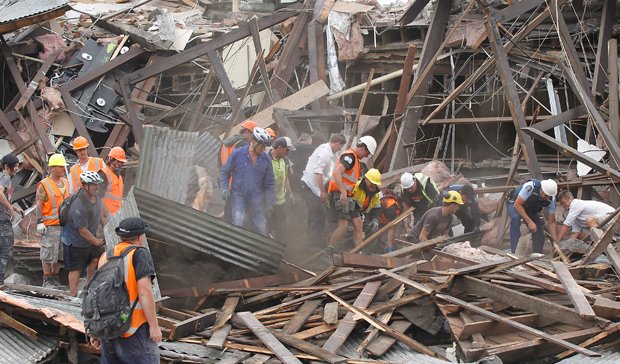Breath detector to help find earthquake survivors

EARTHQUAKE SURVIVORS ARE notoriously difficult to locate under tons of rubble, but now scientists have developed sensors that can locate those trapped by detecting traces of their breath and sweat.
The sensor, developed in the UK, detects metabolites – complex, gassy chemicals released during breathing, sweating and urinating.
“This is the first scientific study on sensing systems that could detect trapped people,” says Paul Thomas, professor at Loughborough University, England. “A device could be used in the field without laboratory support. It could monitor signs of life for prolonged periods and be deployed in large numbers,” he says.
The recent devastating earthquake in Christchurch, New Zeland that struck on 22 February, 2011, killed 181 people, many of whom died when trapped in rubble.
Natural disaster simulation
Researchers tested the device by duplicating a real natural disaster, like an earthquake. Eight volunteers spent many hours at a time in a simulated collapsed, glass-clad, reinforced-concrete building.
During the study, metabolites released by the volunteers mixed with materials in the surrounding debris as well as being masked by changes in humidity and temperature, as they would in real life.
Commander Bill Drysdale, who heads up the Tactical Response Department of the Metropolitan Fire Brigade in Melbourne, is well aware of how difficult it can be to locate trapped survivors, having co-ordinated one of the first Australian teams to help out in the recent Christchurch earthquakes.
Earthquake search and rescue technology
“Our personnel are already exposed to a whole lot of high-tech equipment, large concrete saws, endoscopic cameras and even sensitive listening devices,” Bill says. “However any new equipment that makes the locating and discovery of trapped persons easier is always worth investing time in.”
Current search and rescue efforts rely on as many different available technologies as possible when trying to locate survivors trapped in fallen buildings, even infrared imaging cameras. Bill says that a rescue operator’s most powerful tools are listening devices and cameras that can be easily inserted through cracks in the rubble.
Replacing earthquake sniffer dogs?
The sensor technology was shown to accurately detect human-generated carbon dioxide and ammonia in air that wafted through gaps in the rubble during testing, something that previously only dogs could do, as other technologies focus more heavily on seeing or hearing a survivor.
Concerns about the expense of training dogs, the fact they need frequent rests as well as exposure to risk of both animal and trainer has led to the suggestion that this new technology may well replace dogs in the field. However, Bill believes that it is probably going to be quite some time before they give up on using canine companions in the field.
“Dogs can be used in locations that may be too hazardous or confined for rescuers,” he says. “This sensor would still have to be placed by someone, and depending on its size and weight it might not be feasible in some scenarios.”
Disaster rescue needs coordinated effort
For Bill, any effective and useful technology can only be seen as a welcome addition to search and rescue efforts, but it is only when these devices and methods are used in conjunction with each other that the best results are achieved.
“There is no way of knowing what the chances of a person surviving in a given disaster is, or how long they will survive trapped – there are just too many variables,” he says. “Instead, our priority is to use our training and equipment to locate and rescue these people as quickly as we can, because that’s what will give them the best chance of surviving.”
The research was published in the Journal of Breath Research.
RELATED STORIES

